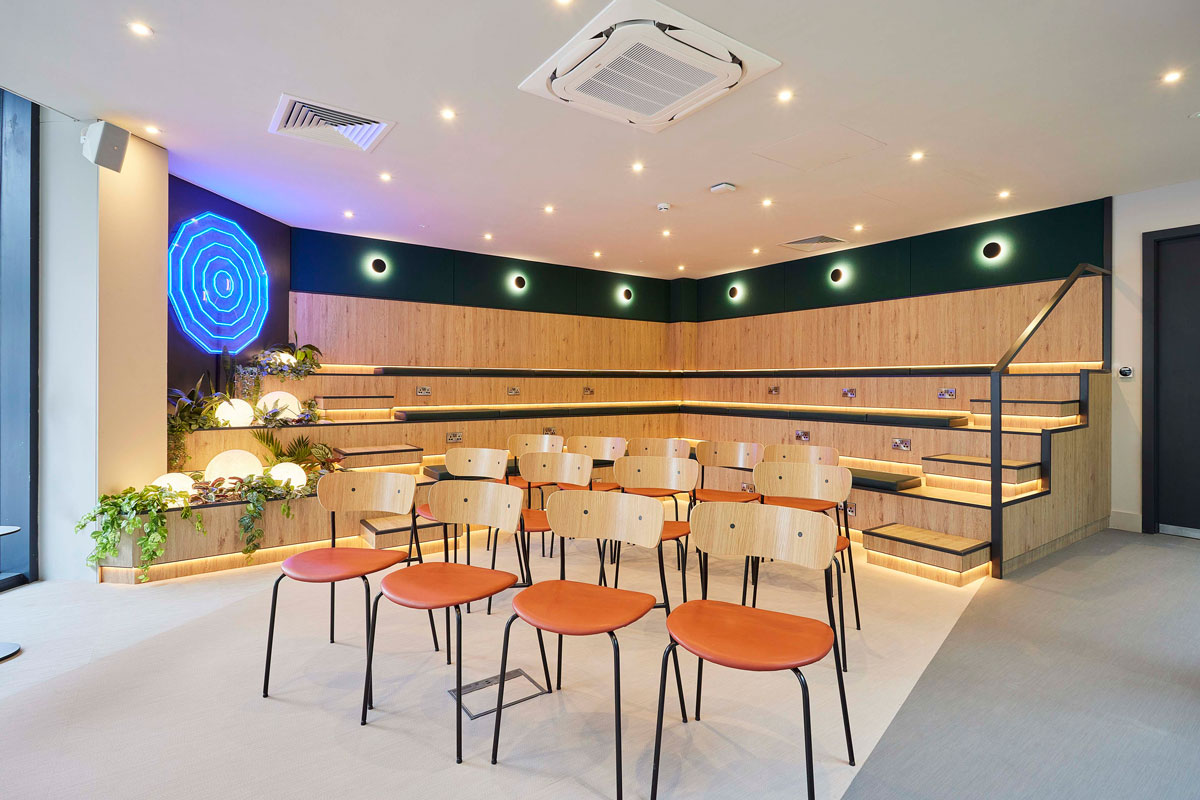
Back To Blogs
October 8, 2025
Joe Averill
5 mins
Talent retention is one of the biggest challenges for leadership teams today. Salaries matter, but they are not the only factor keeping employees engaged. The physical workplace, where people collaborate, focus, and recharge, plays a major role in whether staff stay or leave.
In 2025, employees expect more from offices than a desk and Wi-Fi. They want amenities that make work healthier, more productive, and more social. For CEOs, CFOs, and Facilities Directors, this means viewing office space not as a cost centre, but as a strategic tool for retention.
· Turnover is expensive: Replacing an employee costs 30–50% of their salary.
· Amenities impact satisfaction: Offices that support well-being reduce burnout and absenteeism.
· Culture lives in space: Collaboration zones, social areas, and wellness rooms shape company culture.
· Employees have choice: With hybrid work, people decide whether it’s “worth it” to come in. Amenities tip that decision.
Employees expect workplaces that support mental and physical health.
· On-site gyms or subsidised fitness memberships
· Meditation and quiet rooms
· Healthy food options in cafés and vending
· Access to outdoor spaces or terraces
Impact: Improves well-being, reduces stress, and signals commitment to employee health.
Hybrid work means people come to the office for connection, not solitude.
· Large meeting rooms with advanced AV for hybrid calls
· Informal lounges for brainstorming
· Project rooms that can be reconfigured quickly
· Open breakout areas for spontaneous interaction
Impact: Increases productivity and creativity while reinforcing company culture.
While collaboration is critical, focus work still matters. Offices without quiet space push employees to stay home.
· Soundproof pods or focus rooms
· Library-style zones for deep concentration
· Acoustic treatments in open areas
Impact: Supports hybrid flexibility by giving people real choice in how they work.
Bad technology kills hybrid collaboration. Employees judge offices by whether tech “just works.”
· High-speed, reliable Wi-Fi throughout the building
· Video conferencing equipment with cameras, mics, and screens
· Smart booking systems for desks and rooms
· Integrated collaboration tools
Impact: Reduces frustration, boosts engagement, and supports distributed teams.
Employees — especially younger generations — care about sustainability. Offices that ignore this risk losing credibility.
· Energy-efficient HVAC and lighting
· Recycling and waste management systems
· Green certifications (BREEAM, LEED, WELL)
· Bike storage and electric vehicle charging
Impact: Builds pride in the workplace and supports ESG commitments.
Offices that fit into daily life make commuting worthwhile.
· On-site childcare support or partnerships
· Food and drink options, from quality coffee to healthy lunches
· Proximity to transport hubs
· Concierge services for dry cleaning or parcel delivery
Impact: Reduces friction in daily routines, making office attendance easier.
A financial services firm in Leeds faced high turnover among mid-level staff. Instead of raising salaries alone, they redesigned their office to include:
· A wellness suite with gym and meditation space
· More collaborative breakout rooms
· A sustainable refit with energy-efficient lighting
Within 12 months, attrition dropped by 18%. The cost of the fit-out was offset by savings in recruitment and training.
CFOs often view amenities as an added cost. But the numbers tell a different story.
· Attrition savings: Keeping one £60,000 employee saves £20,000–£30,000 in turnover costs.
· Productivity boost: Even a 5% productivity gain across 100 employees creates value equivalent to millions in revenue.
· Brand perception: Clients and partners judge your business by the environment they see.
👉 Use LEVEL’s Office Cost Calculator to balance amenity investment against savings from reduced turnover.
Wellness facilities, collaboration spaces, quiet zones, technology-enabled meeting rooms, sustainability features, and convenience services.
Amenities improve employee satisfaction and engagement, which lowers attrition rates. Reduced turnover saves significant recruitment and training costs.
Yes. A £100,000 investment in wellness features can pay for itself if it prevents just five mid-level employees from leaving in a year.
Yes. Modern candidates view offices as part of employer brand. A well-designed, amenity-rich space is a recruitment advantage.
Quiet work zones. Many companies over-invest in collaboration areas and forget that employees also need privacy for focused tasks.
In 2025, employees expect offices that support both productivity and well-being. Amenities are not luxuries — they are part of the retention strategy.
For CFOs, the ROI is clear: the cost of losing talent far outweighs the cost of well-designed amenities. For CEOs and Chiefs of Staff, offices that align with culture strengthen loyalty and performance.
👉 Start modeling amenity ROI with LEVEL’s Office Cost Calculator. Compare the cost of new features against potential turnover savings to see how the right investments can protect both budgets and people.
Want to find your next leased, managed or serviced office space to rent? Book a call with our team today.